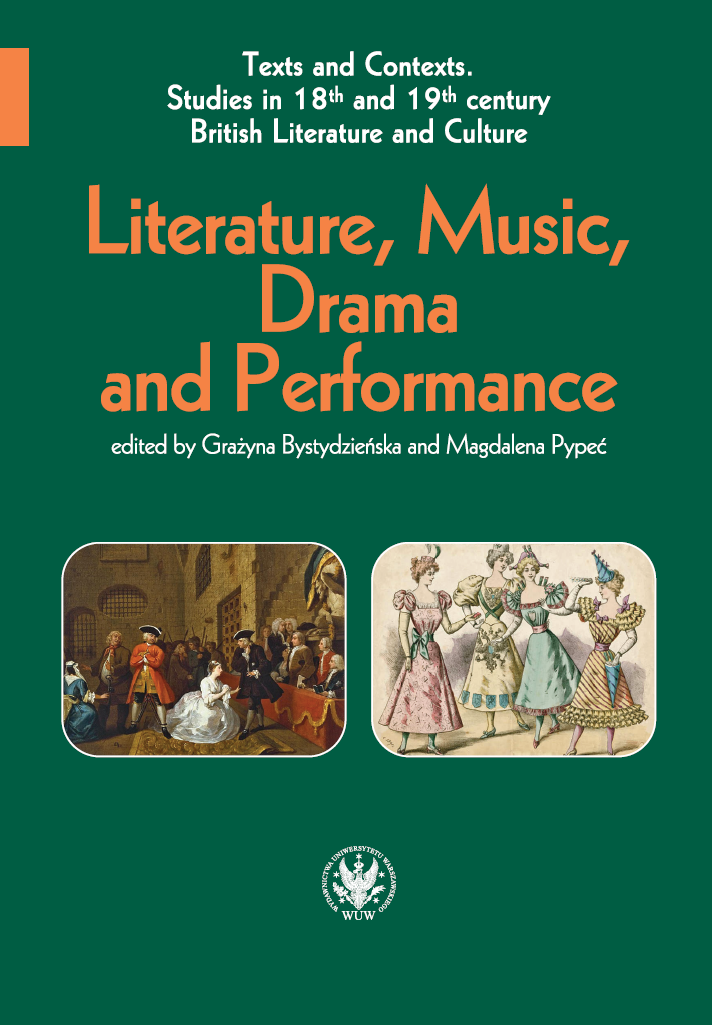The Aeolian Harp and the Strain of Poetry – Musical Imagery in P.B. Shelley’s Selected Verse
The Aeolian Harp and the Strain of Poetry – Musical Imagery in P.B. Shelley’s Selected Verse
Author(s): Małgorzata Łuczyńska-Hołdys
Subject(s): Cultural history, Theoretical Linguistics, Applied Linguistics, Philology, British Literature
Published by: Wydawnictwa Uniwersytetu Warszawskiego
Keywords: poetry; music; Romanticism; Aeolian harp; P.B. Shelley
Summary/Abstract: The references to composing and responding to music appear in the verse of the most famous Romantic poets from Blake to Byron. When Walter Pater famously said that all art should aspire to the condition of music, he might have been talking about the aesthetics of English Romanticism, as “what painting had been for the eighteenth century music became for the nineteenth, the model art” (Tetreault 144). Yet, it is in the poetry of P.B. Shelley that the musical imagery is perhaps the most prominent. Shelley’s favourite word to denote poetry seems to be “strain,” the sound of music being played or performed. Similarly, the image of the Aeolian harp as a trope for the poetic mind, receptive to the surge of inspiration, resurfaces in his verse with astounding consistency. The present article examines Shelley’s representations of poetry as music, particularly in relation to the image of the Aeolian harp, in two very well-known poems and one less popular lyric: “The Ode to the West Wind”, Alastor and “To Constantia, Singing”, and notes the implications this imagery has in relation to the ideas of gender.
Book: Literature, Music, Drama and Performance
- Page Range: 45-55
- Page Count: 11
- Publication Year: 2019
- Language: English
- Content File-PDF

